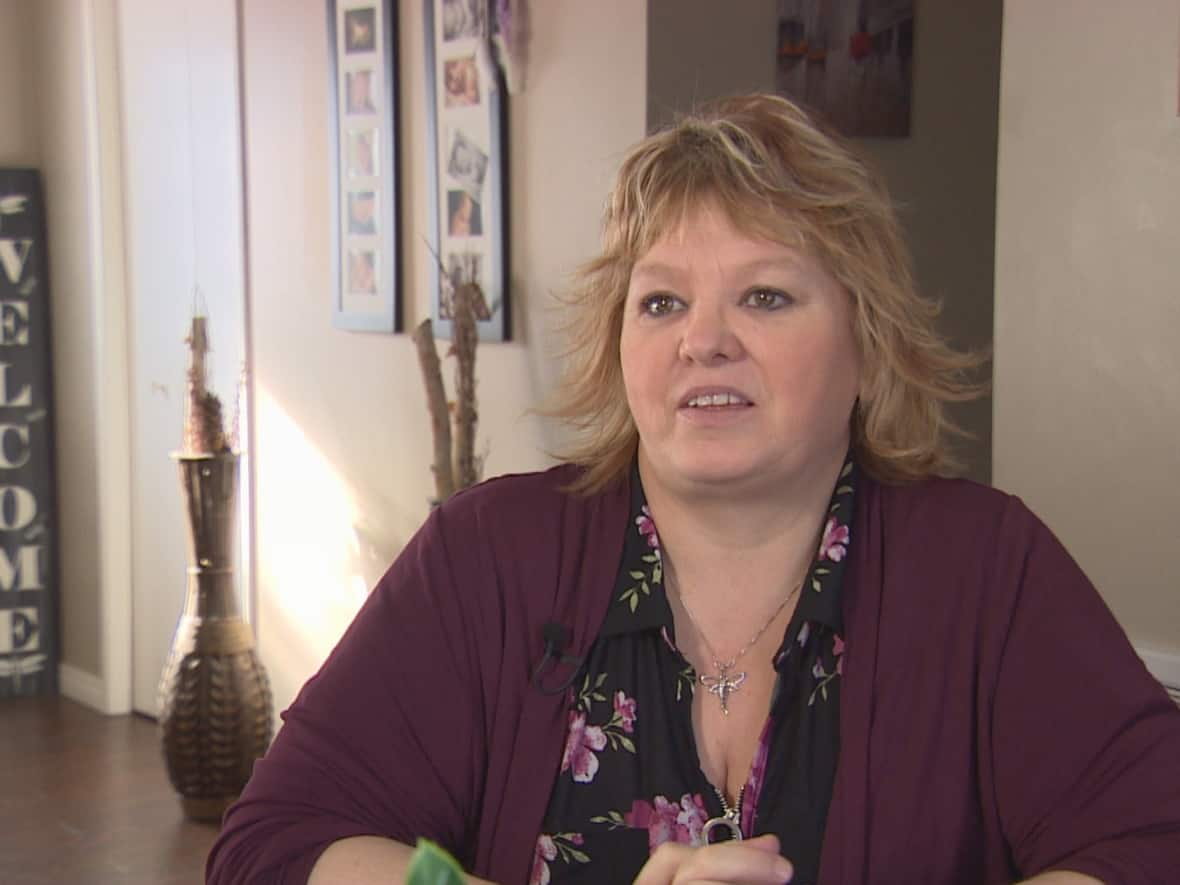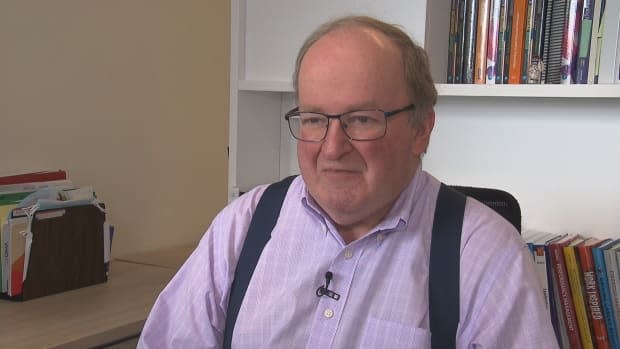Sharp drop in new helicopter pilot licences raises concerns about country's air ambulance service

Dawn Sabeski's vehicle was hit in a head-on collision on a Manitoba highway on May 28, 2017.
Sabeski's friend, who was in the vehicle with her, died on impact; Sabeski was taken to a rural hospital in western Manitoba.
Her injuries were extensive — internal bleeding and multiple fractures — and she needed more advanced medical care.
So she was transported to the Health Sciences Centre in Winnipeg by STARS air ambulance (which stands for Shock Trauma Air Rescue Service).
"I would not have made it [if I were] transported by ambulance to HSC. I wouldn't have made it," said Sabeski, who lives in East Selkirk, Man.

Many parts of rural Canada rely on air ambulances flown by licensed helicopter pilots.
But the number of helicopter pilot licences being issued by Transport Canada has been declining over the last decade — raising concerns over what that means for air ambulances services.
According to figures provided to CBC News, Transport Canada issued 62 helicopter pilot licences in 2012. But in 2022, that number dropped by 80 per cent to just 12.
Retirements, high cost of training
John Gradek, an aviation expert at McGill University in Montreal, said the dramatic drop in the number of licences could be due to several factors.
Gradek, who co-ordinates the school's aviation management program, said pilots have been retiring, and many have also been headhunted by regional and national airlines facing their own pilot shortages.
But he also said there are other reasons, including the cost of training, which can be about $100,000.
"It is an expensive career choice," Gradek said, adding that higher pay could be one way to attract those considering a career in the cockpit.

Cade Clark, vice-president of government affairs for Helicopter Association International, said members of the Virginia-based organization are looking at how to educate high school students about the industry.
"How do we reach out to high school kids, let them know that this industry is wide open and available for them? And as we bring in new students, how do we help them through that pipeline?" he said.
Clark said the helicopter pilot shortage is not unique to Canada, and is being felt south of the border and around the world.
A spokesperson for the Virginia State Police told CBC News that in August 2022, it reduced air ambulance service at one of its bases from 24/7 to 16 hours a day due to the pilot shortage. It is on track to return to round-the-clock service in mid-March.
"When we're not available, the public suffers — and that's a pretty black-and-white issue," Clark said.
"When we're not available, the public suffers — and that's a pretty black-and-white issue." - Cade Clark, Helicopter Association International
"We are truly life-saving, and so when vertical aviation is not available to service the public, there are real-world consequences.... Our operators are taking this very seriously as we look as an industry at how to address this issue."
McGill University's Gradek said air ambulance services are expanding across the country, and there will be even higher demand for pilots.
"Unfortunately, we may be in a situation where we have to ration the availability of ambulance pilots to, in fact, kind of temper the growth that the provincial governments want to see in air ambulance services," he said.
Fierce competition
Helicopter pilot Ryan Shrives, who has 24 years of experience under his belt, has flown with HALO Air Ambulance in Medicine Hat, Alta., for about three and a half years. He's previously flown for the South African Air Force and the United Nations.
Competition for pilots right now is so fierce that Shrives regularly gets headhunted.
"Five years ago, you were begging. You would be handing out CVs, trying to beg for a job," he said.

"Nowadays, if you've got experience, if you've got time on the aircraft and a lot of training in different fields, the guys are calling you weekly. I've had other medevac companies — and I'm not lying when I say — they call us weekly."
Paul Carolan, the chief executive of HALO, said the helicopter service lost seven pilots in the last couple of years: four to other air ambulance operators and three who left the industry.
"If the call comes in right now, we have to be prepared to go. So having those people on-site and ready is always a factor, and it's a fundamental part of who we are," Carolan said. "So it's not that it's harder, but it certainly makes things a bit more complicated."
The organization has replaced the pilots it lost, but Carolan said recruitment is constantly top of mind.

"We're looking at every opportunity and talking to every person and trying to make sure that we stay competitive in an extremely competitive market," he said.
"There is only one position that matters when it comes to what we do, and that is the ability to fly the aircraft. Whether you have clinicians in the back, it doesn't matter if you can't get them there."


